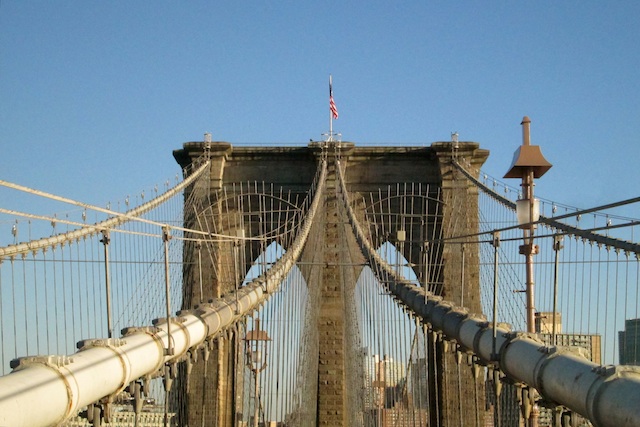Brooklyn Owes the Charmer Under Me
 Tuesday, December 4, 2012 at 2:59PM
Tuesday, December 4, 2012 at 2:59PM  In a recent article written for the New York Observer, Josh Ozersky declared, “Brooklyn, taken as a restaurant city, sucks.” Ozersky lived in Brooklyn for seven years. He was a writer for Grub Street, New York Mag’s food blog. His opinions are learned, his palate is experienced, but his idea of Brooklyn restaurants is utter blaspheme.
In a recent article written for the New York Observer, Josh Ozersky declared, “Brooklyn, taken as a restaurant city, sucks.” Ozersky lived in Brooklyn for seven years. He was a writer for Grub Street, New York Mag’s food blog. His opinions are learned, his palate is experienced, but his idea of Brooklyn restaurants is utter blaspheme.
The most persistent argument Ozerzsky makes throughout the article is that, “Insofar as Brooklyn is gaining a toehold on culinary legitimacy, it’s only by running headlong from its own, very real, very problematic, food culture. Tellingly, almost all of the restaurants that Mr. Platt and others claim as heralding this shift are, unmistakably, Manhattan restaurants, created by Manhattan chefs and restaurateurs.” He goes on to cite Battersby, Colonie, Gwynnett St, and Brooklyn Fare, and gives examples of how chefs at those restaurants have a Manhattan eatery on their resume. It’s a valid point. You can’t deny the natural progression of chefs and restaurateurs from Manhattan that have opened restaurants in Brooklyn, but if we were to talk about the source we’d have to dig a little deeper.
The New Nordic trend that burns white-hot in Manhattan right now is largely the result of Rene Redzepi’s efforts laid out at Noma, his Nordic atelier not in Manhattan, but Copenhagen. The number of chefs that staged in his kitchen and have gone on to open their own restaurants in Manhattan needs at least two sets of hands to count. The most successful might be Matthew Lightner, where his contributions to the Nordic movement at Atera were awarded three stars from the New York Times earlier this year.
Mission Chinese Food on Orchard Street serves a provocative menu of what chef/proprietor Danny Bowien calls “Americanized Oriental” cuisine. The restaurant is one of the few in the city that knows what it’s like to have a two-hour wait on a Tuesday. The original Mission is in San Francisco.
Andy Ricker introduced the city to his knowledge of the Thai pantry with Pok Pok Wing, now Pok Pok Phat Thai, which has quickly become one of the city’s premier destinations for noodles. Ricker later opened Pok Pok Ny in Cobble Hill, Brooklyn. It’s labeled with the “Ny” suffix because the first Pok Pok restaurant is in Portland.
Andrew Carmellini is riding a unique culinary wave. His talent has captured both the Italian (Locanda Verde) and American (The Dutch) palates, and when Lafayette opens in the ensuing weeks, he will use the restaurant to exercise his knowledge of French fare. Long before these restaurants took shape, Carmellini worked under Gray Kunz at Lespinasse in the early 90’s. Kunz landed in New York by way of Singapore.
Going back further still, wasn’t there a guy in France named Paul Bocuse that had a hand in something called nouvelle cuisine? When the farmer’s market came to Union Square in 1976, it compounded the influence of Bocuse’s minimalist cooking that was taking place abroad and fostered the local, sustainable approach to cooking that currently runs rampant in New York kitchens citywide. The modern approach that defines nouvelle cuisine was a riff on previously laid ideals. Those were set at the hands of someone by the name of Auguste Escoffier.
The best restaurants in both Brooklyn and Manhattan are the offspring of ideas and influences from other parts of the world. Manhattan is not the birthplace, but the landing place for the visions of the world’s greatest chefs and restaurateurs. Manhattan will always be the center of the culinary universe, but that’s no reason to gripe about brilliant, exceptional, and progressive menus that happen to come to fruition on the other side of some river. The fact that a place is connected to a culinary nucleus by a network of bridges and tunnels, as Brooklyn is to Manhattan, doesn’t mean there has to be symmetry between both entities, culinary or otherwise. Rivers are not sociological mirrors. If they were, when can we expect the rant about New Jersey?
The influence between boroughs goes both ways. Frank Castronovo and Frank Falcinelli opened a Frankies outpost in Manhattan after the success of their Court Street location in Brooklyn. Mile End took a page from that book earlier this year and opened Mile End Sandwich on Bond St. Brooklyn Fare, refered to by Ozersky as “the borough’s pride,” will open in Hell’s Kitchen soon and Smith Street bakery Bien Cuit is just weeks away from their first Manhattan location.
Some of us are writers, all of us are eaters, and regardless of where we do our eating, as New Yorkers, we can't do it anywhere else any better. Brooklyn does not need to “step up,” as Ozersky writes. The borough doesn’t need to do anything because it doesn’t care what people like me or Josh Ozersky think.
 Brooklyn,
Brooklyn,  Josh Ozersky,
Josh Ozersky,  Manhattan,
Manhattan,  New York Observer
New York Observer
Reader Comments